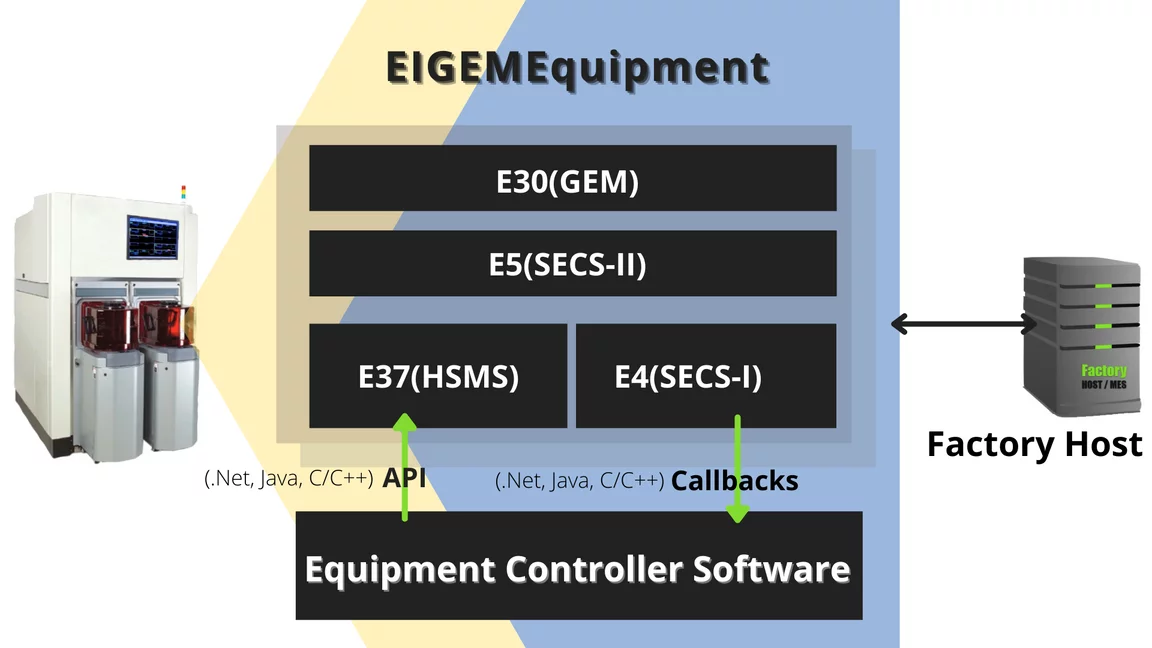In today’s rapidly evolving semiconductor industry, seamless communication between equipment and host systems is crucial for improving efficiency, yield, and reliability. This is where turnkey SECS/GEM integration solutions play a vital role. The SECS/GEM protocol has become the global standard for semiconductor factories, ensuring standardized communication and automation across various manufacturing tools and systems.
Understanding SECS/GEM Protocol Implementation
The SECS/GEM protocol implementation is a critical process that allows semiconductor equipment to communicate effectively with factory host systems. By following the SECS/GEM standard, manufacturers can automate data collection, event reporting, alarm handling, and process control without manual intervention.
A well-executed SECS/GEM protocol implementation for semiconductor factories ensures every tool on the fab floor operates under a unified communication framework—reducing downtime, improving traceability, and supporting predictive maintenance strategies.

Experts for SECS/GEM Software Integration
Successful SECS/GEM deployment requires expertise in both software and equipment-level integration. Experts for SECS/GEM software integration bring in-depth knowledge of GEM commands, message handling, and host/equipment interaction to enable stable and efficient factory automation. These specialists design, develop, and test SECS/GEM interfaces that comply with the GEM300 standards, ensuring interoperability and long-term reliability.
For OEMs, working with experienced SECS/GEM professionals helps in reducing development time, avoiding costly compliance errors, and accelerating equipment delivery to end customers.

SECS/GEM Connectivity for Factory Automation
Factory automation depends on reliable and consistent connectivity across tools. SECS/GEM connectivity for factory automation enables real-time data exchange, status monitoring, and command execution between tools and MES (Manufacturing Execution Systems).
With advanced middleware solutions, fabs can gain complete visibility into their equipment health, process data, and yield performance. This connectivity forms the backbone of smart manufacturing initiatives and aligns perfectly with Industry 4.0 goals.
SECS/GEM Interface Development for Manufacturing Equipment
For equipment manufacturers, building a robust SECS/GEM interface is not just about compliance—it’s about performance optimization. SECS/GEM interface development for manufacturing equipment involves designing communication layers that support data collection, trace, alarms, and control functions as per SEMI E4, E5, E30, and E37 standards.
Whether you are an OEM or a fab, developing an advanced SECS/GEM interface enhances compatibility with factory host systems and ensures smooth integration during equipment commissioning.
SECS/GEM Compliance Testing and Validation
Before deployment, every tool must undergo SECS/GEM compliance testing to ensure it meets the communication and control requirements of the GEM standard. This process validates message sequencing, response timing, event handling, and error management.
Automated compliance testing tools and simulators are often used to replicate host or equipment behavior and verify end-to-end communication integrity. Regular testing helps prevent operational issues and ensures ongoing system reliability.
SECS/GEM Middleware for Equipment Communication
SECS/GEM middleware for equipment communication acts as the bridge between the equipment and the host system. It standardizes the communication process, handles protocol translation, and ensures data consistency across various machines and software platforms.
By using middleware, fabs can simplify integration with legacy systems and manage multiple equipment models through a single communication layer.
SECS/GEM Protocol Upgrades for Legacy Manufacturing Systems
Many older manufacturing systems still run on outdated communication interfaces, making integration difficult. SECS/GEM protocol upgrades for legacy manufacturing systems help bring these tools into modern automated environments without full hardware replacement.
By implementing an upgrade through an SECS/GEM gateway or embedded controller, factories can connect legacy tools to their MES or SCADA systems—improving data visibility, operational control, and equipment utilization.
Implementing a comprehensive SECS/GEM integration strategy is key to achieving full factory automation and operational excellence in semiconductor manufacturing. From SECS/GEM protocol implementation to middleware communication and compliance testing, every step ensures seamless interoperability and improved productivity.
Partnering with experienced SECS/GEM experts ensures your factory stays compliant, connected, and ready for the future of smart manufacturing.

